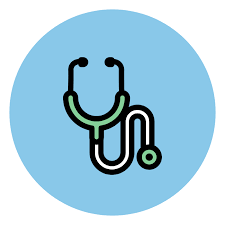✦
How Ketamine is Different Than SSRIs
By Michael Alvear, Health Author & Independent Researcher
My research is published on these scholarly platforms:
Last Updated:
For decades, SSRIs (Selective Serotonin Reuptake Inhibitors) have been the go-to treatment for depression, but let’s be honest – they’ve fallen short for many people. While these traditional antidepressants help some individuals, they’ve left countless others still struggling in the darkness of depression. Enter ketamine therapy: a groundbreaking treatment that’s rewriting the rules of depression treatment. Let’s explore why ketamine is so much more effective than SSRIs.
Speed: The Difference Between Days and Months
Imagine you’re stuck in a deep, dark well. With SSRIs, it’s like someone slowly lowering a rope that takes 2-6 weeks to reach you. With ketamine, it’s more like having a rescue helicopter drop a ladder immediately – many patients report significant symptom relief within hours or days after their first treatment. This rapid response can be life-changing, especially for those in crisis or who’ve suffered for years waiting for traditional medications to work.
Success Rates: A Dramatic Difference
The numbers tell a compelling story. While SSRIs help about 40% of people with depression feel somewhat better, ketamine therapy shows response rates up to 90%. Even more impressive, about 70% of patients achieve remission with ketamine – meaning their depression symptoms almost completely resolve. Compare this to SSRIs, where only about 20% of treatment-resistant patients achieve remission.
Think of it this way: If you had a serious infection, would you prefer a treatment that works 40% of the time or one that works 90% of the time?
How They Work: Different Approaches, Different Results
SSRIs work like a slow-acting tune-up for your brain’s serotonin system. They gradually adjust your brain’s chemical balance, which might or might not solve the underlying problem. It’s like trying to fix a broken-down car by only adjusting the fuel mixture – sometimes it helps, but often it’s not addressing the real issue.
Ketamine, on the other hand, works more like a rapid brain remodeling service. It triggers the growth of new neural connections and helps repair brain circuits damaged by depression. Imagine your brain as a forest where many paths have become overgrown with negative thought patterns. Ketamine helps your brain rapidly create new, healthier pathways, like clearing and building new trails through the forest.
Side Effects: A Striking Contrast
Here’s where the difference becomes even more apparent. SSRIs often come with a long list of ongoing side effects that can last months or years – sexual dysfunction, weight gain, emotional numbness, sleep problems, and digestive issues. About 50-80% of people on SSRIs experience at least one persistent side effect.
Ketamine’s side effects are primarily limited to the treatment day itself. Yes, you’ll feel woozy and need someone to drive you home after treatment. You might experience some nausea (which can be prevented with medication) and feel tired for the rest of the day. But here’s the key difference: these effects typically clear up within 24 hours. It’s like the difference between having a hangover for one day versus dealing with side effects every day for years.
Treatment Commitment: Flexibility vs. Daily Dedication
Taking SSRIs requires a long-term, often indefinite commitment to daily medication. It’s like signing up for a lifetime gym membership where you must show up every single day, or it stops working.
Ketamine therapy follows a more flexible protocol. Typically, you’ll have more frequent treatments in the first month (twice weekly), then gradually space them out. After the initial three-month protocol, many people only need occasional maintenance treatments – if any. It’s more like getting a tune-up when you need it, rather than daily maintenance.
The Real-World Impact
Perhaps the most telling statistic is this: while only 21-31% of people stick with their SSRI treatment over 6-12 months (often due to side effects or lack of effectiveness), 70-80% of ketamine patients continue their treatment protocol. People stick with ketamine because it works, and it works quickly.
The Trade-Off: Convenience vs. Effectiveness
Yes, SSRIs have one clear advantage: convenience. Taking a daily pill at home is easier than going to a clinic for ketamine treatment. However, consider this analogy: if you had a broken bone, would you prefer taking a daily vitamin that might help it heal over several months, or would you rather get it properly set at a clinic and heal much faster?
It must be said, also, that SSRIs have an insurance coverage advantage over ketamine.
The Bottom Line
While SSRIs have helped some people, their low success rates, delayed onset, persistent side effects, and lifetime commitment requirements have left many depression sufferers looking for better options. Ketamine therapy represents a paradigm shift in depression treatment – offering faster relief, higher success rates, fewer long-term side effects, and a more flexible treatment protocol.
If you’ve been struggling with depression, especially if SSRIs haven’t worked well for you, ketamine therapy might be worth considering. The science is clear: it’s not just another treatment option – it’s a much more effective one.
Remember: While this information is promising, always consult with mental health professionals to determine the best treatment path for your specific situation.





Leave a Reply